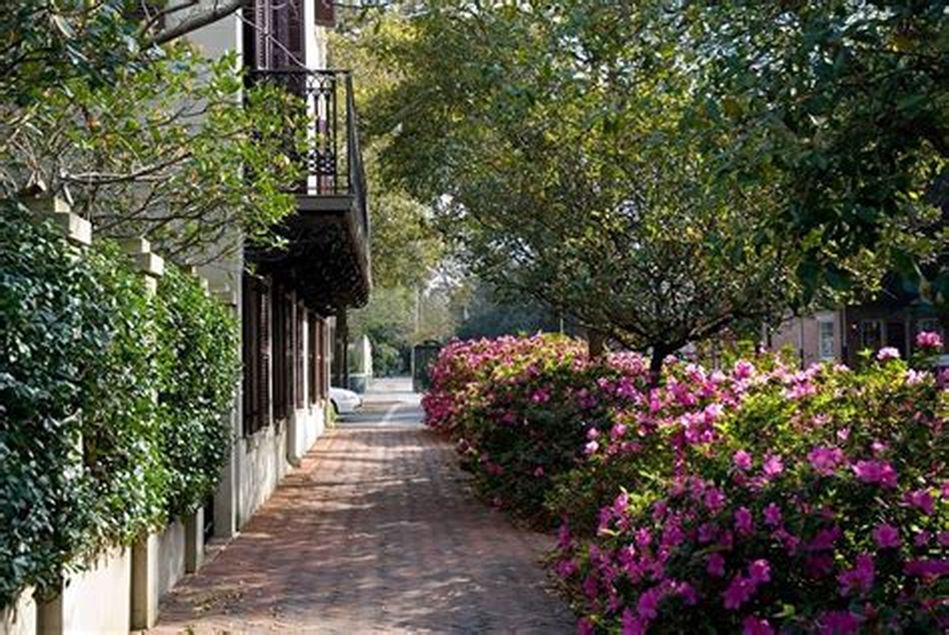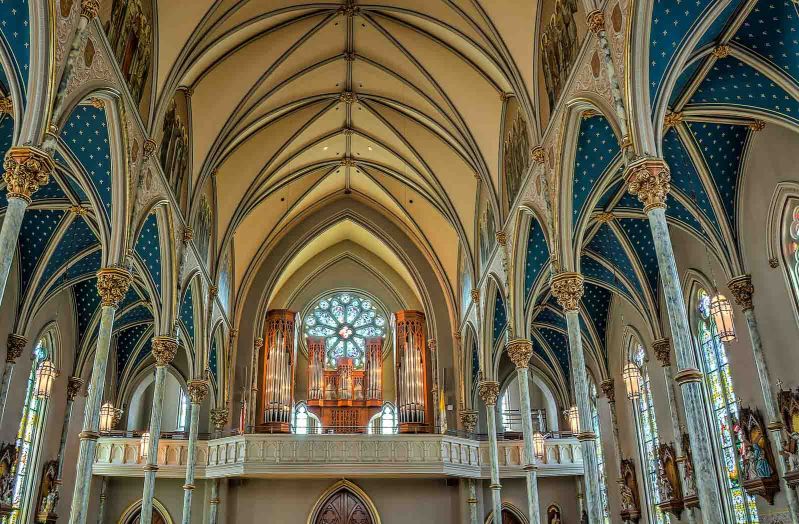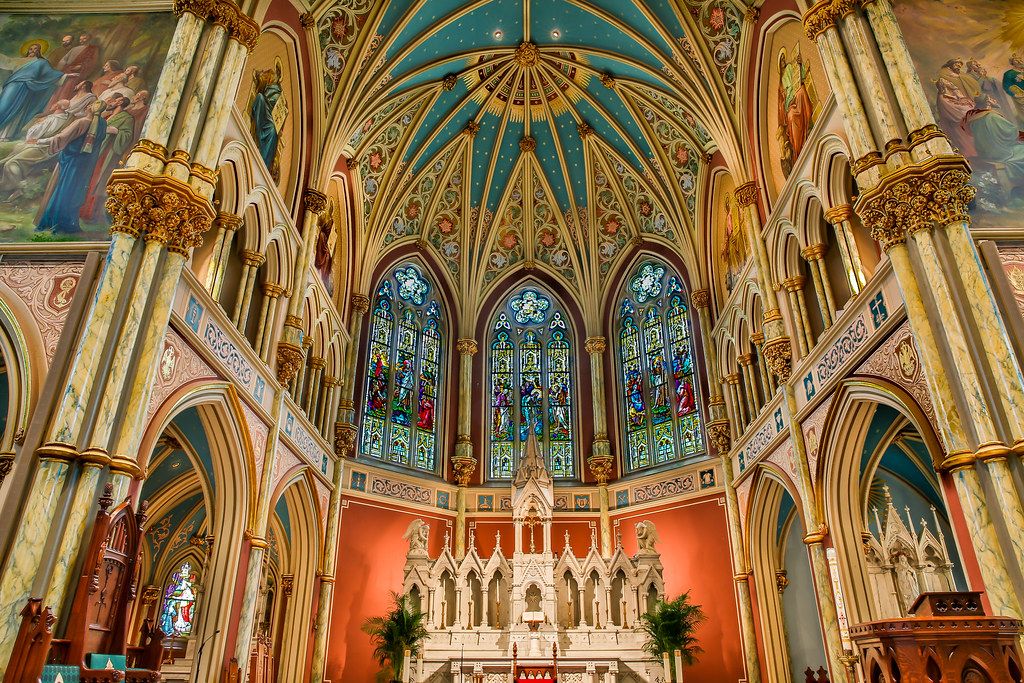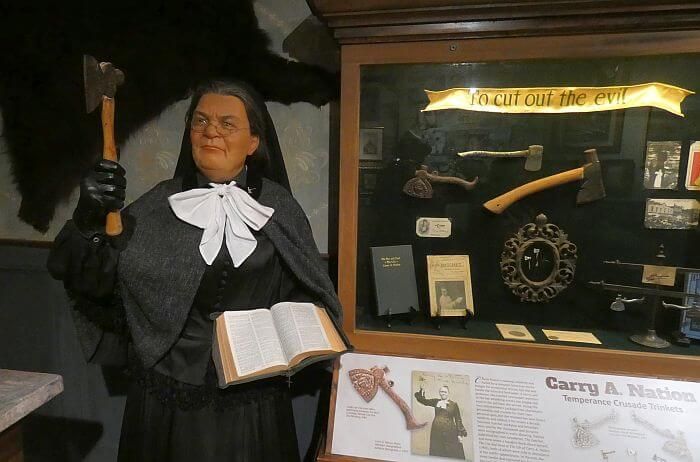Savannah was, as advertised, a very gracious and unique southern city. There were frequent avenues with park-like medians filled with ancient and carefully-nurtured live oaks covered with Spanish moss. It boasts of lots of cobble-stoned or brick streets, and unique architectural features: it featured almost-half the city tinted like Charleston’s Rainbow-Row and fancy railings on urban patios. And flowers, flowers everywhere. There were also frequent “squares”: small parks with greenery, benches, and landscaping.

The drivers were courteous and not at all stress-inducing. There were lots of pedestrian walkways across the streets; drivers behaved and gave them the right of way. They’d better: it looked like tourism was Savannah’s major source of income. The last time I saw that many obvious visitors I was in New York City. And this meant that the area was designed to separate the tourists, graciously, from their money.
This was apparent when we stopped for decent coffee across the street from The Basilica of St. John the Baptist at a quaint (i.e. expensive) little shop called Mirabel. We had to wait until a worship service was over, and what better way on a muggy day than to sit in air-conditioned comfort sipping java? Well, a little box of about a dozen dark-chocolate-covered orange half-slices, a water-colored post card of the cathedral front, and two coffees cost us over $20. Eek, but it was money well-spent.

Once the basilica was reopened to visitors we wandered across the street and inside. It, too, was air-conditioned and would have to be to not have moss growing on the carved wooden pews! And Jennifer Boone was right: the place was worth seeing. It was built in the same pattern as a medieval European cathedral with the same flying buttresses and arches. I’ve seen larger, but only one more magnificent and that only because it was a celebration of architectural lines rather than ornamentation. It had a rose widow above the main entry, green marble columns, a magnificent organ, and the usual stained-glass windows depicting the life of Christ.

There was statuary and it had the usual prayer candles. (I lit one. $2.) But what really set it apart was a huge baptistery, huge carvings between the side windows—the stations of the cross done as wooden dioramas—and all the frescoes. So many frescoes!

Above the pew-level wainscoting there was a two-foot-high patterned border along the walls done in colors taken from the marble columns in fresco containing gold leaf. Above the stained-glass windows at the sides of the church there were frescoes of the life of Christ. Above the altar there were two levels of frescoes about the saints interacting with Christ, especially the basilica’s patron St. John the Baptist. And above it all the ceiling vaults between the arches were frescoed in a dark blue studded with gold-leaf frescoed stars. Magnificent!

And all of this had been rebuilt after a fire in 1898 gutted the building. We took a lot of photos and had some taken of us there. And on the way out we bought a rose-window Christmas ornament. He was going to buy it with a credit card but they only took cash or checks. It was $20 but they accepted the mere $12 cash I had in my wallet. And we noted copies of Catholic newspapers celebrating the end of Roe v. Wade.
After we walked back to our parking spot Brian continued to drive. Despite the forecast it was nice out so we tried for the a ferry ride but will have to do that from one of the street trolleys or tour buses, as there was absolutely nowhere to park. Another day, perhaps. Instead, we found The Prohibition Museum and a paid underground parking lot nearby. Before we left our car we had a picnic lunch from our cooler so we could make up for the expense of the coffee shop. Thus fortified, we braved the warm and humid air, grateful that at least we were underground and would not have solar gain turn our car into an oven while we were gone.

Brian paid for the museum: a somewhat reasonable $17.50 each, and we got out money’s worth. The place was absolutely fascinating and had translations in Chinese, German, French, and Spanish for the major exhibits. Lots of period machinery for an enraptured Brian to gawk over; lots of art-deco things and items like flapper clothing for me to enjoy. Although I’d heard of Carrie Nation I had no idea who she was: migod, her signature move was that she went into saloons and broke them up with an axe! She was invariably arrested and fined, and paid her fines out of speaking fees and selling commemorative axe-themed stick pins, charms, and souvenirs. There were authentically dressed and life-like waxwork statues of all the major players in the prohibition drama, as appropriate—and Carrie Nation’s was imposing.

We learned that the famous revival preacher Billy Sunday was a prohibitionist and used to be a major-league baseball player. We saw numerous prohibition materials like magazines, flyers, ribbons, and sheet music. And there were KKK in the prohibition movement, too. The plight of farmers and distilleries who lost their businesses was explored, and the explosive growth of the FBI as an enforcement bureau and of prisons was chronicled: it reminded us very much of the whole mindset behind our country’s attitude and enforcement of marijuana laws, with the same resulting lawlessness. In the case of Prohibition it lead to the rise of the mob. Bathtub gin and home stills were described, with examples. NASCAR got its start from Ford V-8 racing contests so rum and moonshine runners could out-speed the feds and revenuers. Walgreens went from an obscure single Midwestern pharmacy to 600 stores based on their prescribing alcohol for “medicinal purposes.” The tour ended with a Speakeasy with a working bar (we did not indulge), and a film based on newsreels from that period, and then an exhibit about the end of prohibition.

I did not know that before Prohibition 40% of our national budget was from taxes on alcohol; Prohibition gave us Federal income tax instead (and now, also). I had no idea that Prohibition had changed our national landscape so profoundly. Again, money well spent.

